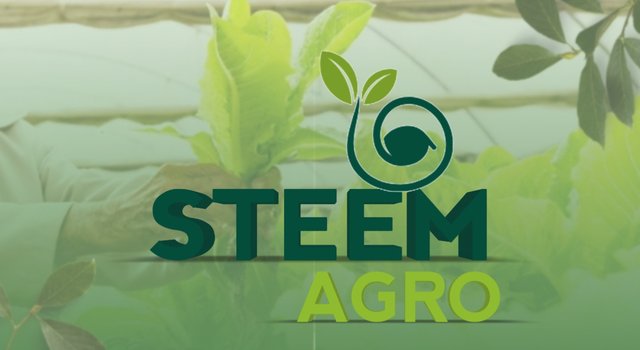Contest | "Living In The Agricultural World #5"
Hi guys, welcome to my blog. Kudos to @ninapenda for the contest and the topic. Let's begin...
What Are The Benefits Of Animal Waste In Farming? |
|---|
 Source Source |
|---|
Animal waste also referred to as manure, has numerous benefits in farming, the following are its benefits:
A. Soil Improvement
- Nutrient-rich fertilizer: Manure adds requisite nutrients (NPK) to the soil.
- Soil structure enhancement: Manure enhances soil texture, aeration, as well as water-holding capacity.
- Increased soil biota: Manure supports advantageous microorganisms.
B. Crop Production
- Organic fertilizer: Manure reduces the use of synthetic fertilizer.
- Improved crop yields: Manure increases crop growth and productivity.
- Diversified crop rotation: Manure allows for more efficient crop rotation.
C. Environmental Benefits
- Waste reduction: Utilization of manure reduces waste disposal issues.
- Water conservation: Manure assists in retaining soil moisture.
- Reduced greenhouse gases: Application of manure decreases synthetic fertilizer production.
D. Economic Benefits
- Cost-effective fertilizer: Manure mitigates fertilizer costs.
- Increased farm income: Manure-based farming improves and amplifies profitability.
- Job creation: Management and utilization of manure creates employment opportunities.
Other Benefits:
- Biogas production: Anaerobic digestion of manure generates biogas (energy).
- Composting: Manure-based composting gives rise to valuable soil amendment.
- Erosion control: Manure assists in stabilizing soil and hindering erosion.
Ways To Improve Food Security In Agriculture |
|---|
A multi-faceted approach is required to improve food security in agriculture. Here are some strategies to consider:
A. Sustainable Agriculture Practices
- Intercropping and crop rotation
- Agroforestry
- Precision agriculture
- Organic farming
- Conservation agriculture
B. Increased Food Production
- Urban agriculture
- Livestock enhancement programs
- Irrigation management
- Aquaculture development
- High-yielding varieties of crop
C. Reduced Food Loss and Waste
- Anaerobic and composting digestion
- Food preservation and storage techniques
- Enhanced harvesting and handling practices
- Food redistribution and recovery programs
- Effective supply chain management
D. Enhanced Food Access
- E-commerce and mobile markets platforms
- Food assistance programs
- Market access for smallholder farmers
- Social protection schemes
- Rural infrastructure and development
E. Climate-Smart Agriculture
- Integrated water management
- Weather-based crop supervision
- Climate-resilient crop as well as animal varieties
- Carbon sequestration and soil conservation
- Agro-insurance programs
F. Governance and Policy
- Food safety and standards regulations
- Agricultural research as well as development funding
- National food security policies
- Policy bield for smallholder farmers
- International cooperation and barter agreements
G. Innovative Technologies
- Blockchain technology for traceability of food
- Mobile apps for farmers
- Precision farming and UAVs
- Hydroponics and vertical farming
- Satellite-based monitoring of crop
H. Education and Training
- Agricultural education as well as research institutions
- Women's empowerment and education
- Farmer schooling and capacity building
- Engagement of youths in agriculture
- Agricultural extension services
I. Community-Based Initiatives
- Food festivals as well as cultural events
- Local food markets and systems
- Community-bielded agriculture programs
- Urban-rural partnerships and linkages
- Farmers' organizations and cooperatives
The implementation of these strategies can significantly enhance food security in agriculture, making sure that everyone has access to sufficient, safe, and nutritious food.
What Are The Benefits Of Agroforestry? |
|---|
Agroforestry is a farming practice that merges trees with agricultural crops and/or livestock on the same land. Agroforestry benefits are many and diverse, hence can be categorized into several areas:
A. Environmental Benefits
- Value-Added Products: Trees make available timber, fruits, and nuts.
- Improved Livelihoods: Farmers gain from sustainable farming practices.
- Increased Income: Variegated farming systems optimizes profits.
- Reduced Costs: Shade mitigates the call for fertilizers and pesticides.
- Job Creation: Agroforestry gives rise to employment opportunities.
B. Social Benefits
- Health Benefits: Agroforestry excites ecosystem services.
- Cultural Preservation: Maintains traditional farming practices.
- Food Security: Agroforestry improves food availability.
- Education: Agroforestry exhibits sustainable farming methods.
- Community Development: Agroforestry advocates social cohesion.
C. Agricultural Benefits
- Livestock Benefits: Trees offers shade and fodder.
- Pollination: Trees allures pollinators.
- Crop Yields: Trees enhance soil fertility, ameliorating crop yields.
- Soil Health: Tree roots enhances soil structure.
- Pest Control: Trees make attainable natural pest control.
D. Climate Change Mitigation
- Resilience: Agroforestry improves farm resilience.
- Carbon Storage: Agroforestry segregates carbon.
- Adaptation: Agroforestry assists farmers adapt to climate change.
- Greenhouse Gas Reduction: Agroforestry mitigates emissions.
E. Policy and Development Benefits
- International Cooperation: Agroforestry encourages global collaboration.
- Research and Development: Agroforestry propels innovation.
- Sustainable Development: Agroforestry falls into line with SDGs.
- Capacity Building: Agroforestry improves farmer capacity.
- Policy Support: Agroforestry influences agricultural policies.
What Are The Common Problems Of Seedlings During Early Growth |
|---|
During early growth, seedlings are prone to different problems that can alter their development, survival, as well as future productivity. The following are some common issues:
A. Environmental Problems
- Severe weather conditions (frost, drought)
- Insufficient watering (over/underwatering)
- Fluctuations of temperature
- Poor circulation of air
- Inadequate light
B. Pests and Diseases
- Nematodes
- Fungal diseases (powdery mildew, damping off)
- Whiteflies
- Bacterial ailments (leaf spot, root rot)
- Spider mites
- Aphids
C. Nutritional Deficiencies
- Potassium deficiency
- Nitrogen inadequacy
- Micronutrient (iron, magnesium, calcium) deficiencies
- Phosphorus deficiency
D. Physical Damage
- Animal damage (wildlife, pests)
- Transplant shock
- Mechanical damage (cutting, bruising)
E. Soil-Related Issues
- Soil-borne diseases
- Poor soil structure
- Inadequacy of nutrients in the soil
- Insufficient drainage
F. Genetic Problems
- Intrinsic genetic disorders
- Incest depression
- Poor quality of seed
Other Issues
- Inconsistent growth regulators
- Rivalry from weeds
- Insufficient monitoring and maintenance
- Deficient support (staking, pruning)
Thank you for coming along, I am inviting @mercybliss, @chima09, and @databae
X promotion link
Welcome to steem-agro!
MODs Comment/Recommendation:
Thank you so much for posting in our community.
Remember to always share your post on Twitter using these 3 main tags #steem #steemit $steem

Thanks for reviewing